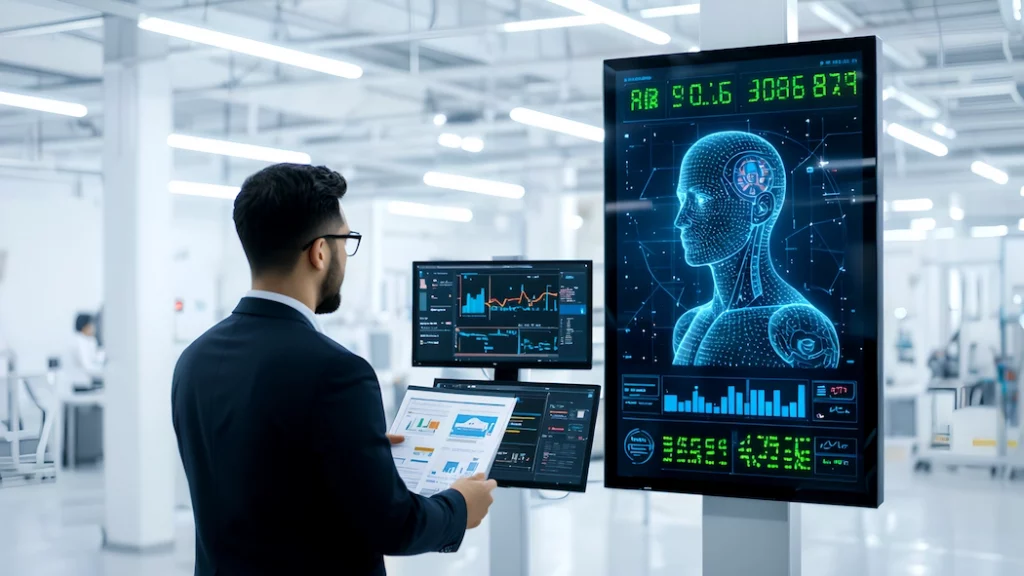Interoperability & System Integration: Bridging the Gap Between Legacy Systems and AI
In the rush toward digital transformation, many businesses encounter a critical obstacle: legacy systems that don’t play well with modern AI tools. These older platforms, often built decades ago, are deeply embedded in company operations—but they’re also inflexible, hard to scale, and incompatible with the demands of today’s data-driven, AI-powered business models.
This disconnect poses a serious challenge. Without integration, AI can’t access the very data it needs to deliver insights, automation, or optimization. So how can businesses bridge the old and the new without ripping everything out and starting again?
Let’s explore why interoperability matters, the technologies making it possible, and how organizations can begin unlocking the full value of their data.
The Challenge: Data Silos and System Incompatibility
Many companies still rely on systems built before terms like “machine learning” or “cloud computing” were common. Think of ERP systems from the early 2000s, proprietary industrial control systems, or on-premise databases designed without external data exchange in mind.
These systems often:
-
Use outdated data formats or protocols
-
Lack APIs or external connectors
-
Are hosted on infrastructure with limited scalability
-
Cannot process real-time data
As a result, data remains siloed—trapped inside one part of the business, invisible to others. And AI, which depends on clean, accessible, and contextualized data, becomes ineffective or inaccurate.
The Solution: API-Driven Architectures & Middleware
The key to unlocking interoperability lies in embracing API-first design principles and middleware platforms.
-
APIs (Application Programming Interfaces) allow different software systems to talk to each other. By retrofitting older systems with API layers—or choosing third-party connectors that expose legacy data to modern platforms—organizations can begin bridging the divide without a full system overhaul.
-
Middleware solutions act as translators. They sit between systems, standardizing communication protocols, converting data formats, and orchestrating processes. For example, middleware can pull order data from an old warehouse system and feed it into an AI-based inventory optimization tool in real time.
Real-world example:
A manufacturing company using a 15-year-old SCADA system may deploy a middleware gateway that converts machine data into OPC UA—a modern, AI-friendly format—making it usable by cloud-based analytics platforms.
Standardizing Data: The Foundation of Seamless Integration
Just as people communicate better with a shared language, systems integrate more easily when data follows agreed-upon standards. That’s why data standardization is crucial for AI implementation.
Some examples of standardized protocols include:
-
OPC UA (Open Platform Communications Unified Architecture) for industrial automation
-
FHIR (Fast Healthcare Interoperability Resources) in healthcare
-
EDI (Electronic Data Interchange) in logistics and retail
Standardization allows AI tools to:
-
Interpret data from diverse sources
-
Compare and combine datasets reliably
-
Scale solutions across departments or sites
By moving toward widely accepted formats and protocols, businesses reduce integration complexity and enhance the speed at which AI tools can be deployed and trained.
Benefits of Integration for AI Deployment
When interoperability and system integration are handled correctly, the benefits are immediate and far-reaching:
-
Real-time decision-making: AI tools can access up-to-the-minute data from multiple systems.
-
Operational efficiency: Processes become smoother as systems communicate without human intervention.
-
Cost savings: Businesses avoid replacing expensive legacy systems by extending their value.
-
Future-proofing: Integrated systems are more adaptable to future tools, platforms, and technologies.
Getting Started: A Practical Roadmap
-
Audit your systems: Identify legacy platforms, the data they hold, and whether they support any form of integration.
-
Invest in middleware: Choose a platform or integration layer that can connect the dots between old and new.
-
Adopt open standards: Whenever possible, reformat or export data using standardized protocols.
-
Collaborate with IT & AI teams: Integration isn’t just a tech problem—it requires strategic planning across departments.
-
Start small: Integrate one process (like sales data flowing into a predictive analytics tool) before scaling up.
Final Thoughts
Legacy systems aren’t going away anytime soon—but that doesn’t mean they can’t be part of a modern AI-powered business strategy. With thoughtful integration and a focus on interoperability, companies can bridge the technological gap, maximize the value of their existing infrastructure, and fully embrace the possibilities of artificial intelligence.
In the race for digital transformation, it’s not about starting over—it’s about connecting the dots.
